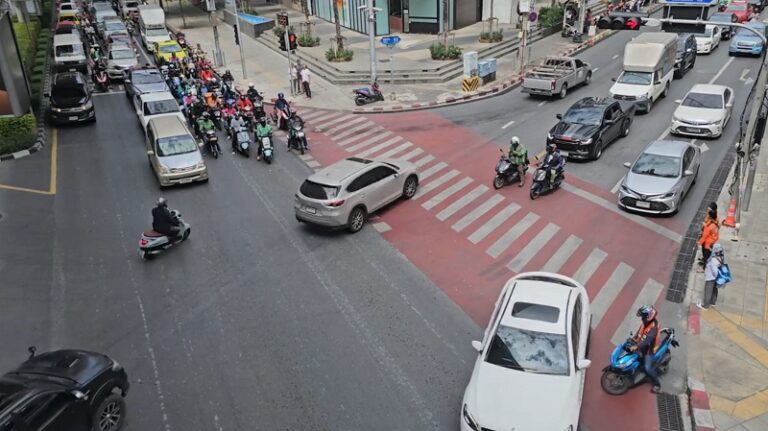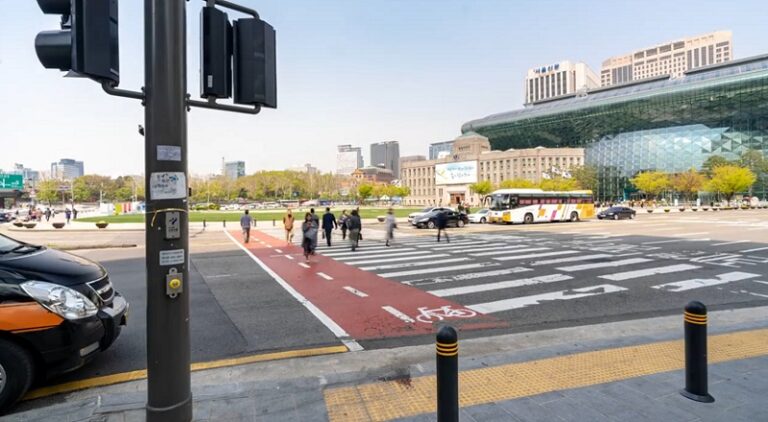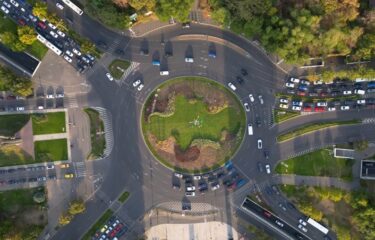MOVA
Traffic signal optimisation for isolated junctions and crossings
Home | Intelligent Signal Control | MOVA
Microprocessor Optimised Vehicle Actuation
Originally designed by TRL during the 1980s, MOVA is now a very well established strategy for the control of traffic light signals at isolated junctions. It can also be used at stand-alone pedestrian crossing, i.e. Puffin and Pelicans MOVA is now often deployed as a linked scheme. MOVA is thought to be installed at about half the UK junctions that it could be installed at, with 200 to 300 installations being added annually.
MOVA M8 is the current version. This version is a significant upgrade from previous versions, having special conditioning, a new communication method including a junction mimic screen, additional bus priority facilities and a Web User Interface.
MOVA is designed to cater for the full range of traffic conditions, from very low flows through to a junction that is overloaded. For the major part of the range – before congestion occurs, MOVA operates in a delay minimising mode; if any approach becomes overloaded, the system switches to a capacity maximising procedure. MOVA is also able to operate at a wide range of junctions, from the very simple ‘shuttle-working’, to large, multi-phase multi-lane sites.
Current Version: M8.01
System Requirements:
Training Course Schedule
There are no training courses currently scheduled, but here are the details about which ones can be available:
| 2 Day MOVA 8 Upgrade Course |
| Online: 2 Day MOVA Engineers’ Course |
Suggest a feature

MOVA is particularly well suited to the following:
- Sites with high traffic flow, particularly where these are seasonal or intermittent (for instance, motorway diversion routes and holiday routes).
- Sites experiencing capacity difficulties under VA control with congestion on one or more approaches.
- Sites with high speed approaches and/or red compliance problems.
- Where additional capacity is required to allow pedestrian facilities or safer staging structure to be introduced.
- Where more than one junction is situated too close to be considered as isolated, there are ways in which two or more junctions can be linked by the use of MOVA control. Partially or even fully signalised roundabouts are a good example of a MOVA linking opportunity.
- Puffin crossings where the call-cancel demands from kerbside detectors can be dealt with correctly and the identification of gaps in traffic can be considerably more effective than D-system VA.
MOVA is being used by almost all Authorities who have responsibility for traffic signals, and is a requirement on new signal installations and major refurbishments on trunk roads. MOVA can be used in conjunction with any controller conforming to Departmental Specification TR2500 and it is available in one of the following forms:
- Add-on unit that connects to the controller via the standard UTC interface,
- ‘Semi integral’ where MOVA and the Controller are separate but have a dedicated communication link,
- Integral where the MOVA kernel software is incorporated into the Controller (although MOVA still effectively remains a separate component).

Controlling traffic light signals
MOVA Consultancy Services

TRL are able to supply a full range of consultancy services on MOVA. Please contact us at software@trl.co.uk
The latest versions of MOVA Comm, MOVA Tools and the Application Guides (AG 44 and 45) can be found on the downloads section. There is further advice about using wireless linking of detectors and the setting of intergreens on high speed roads.
For information on specific manufacturer implementations of MOVA and equipment maintenance enquiries, please contact the manufacturers directly:
- Dynniq: dynniq.co.uk
- Colas: colas.co.uk
- Siemens: siemens.co.uk/traffic
- Telent: telent.com



